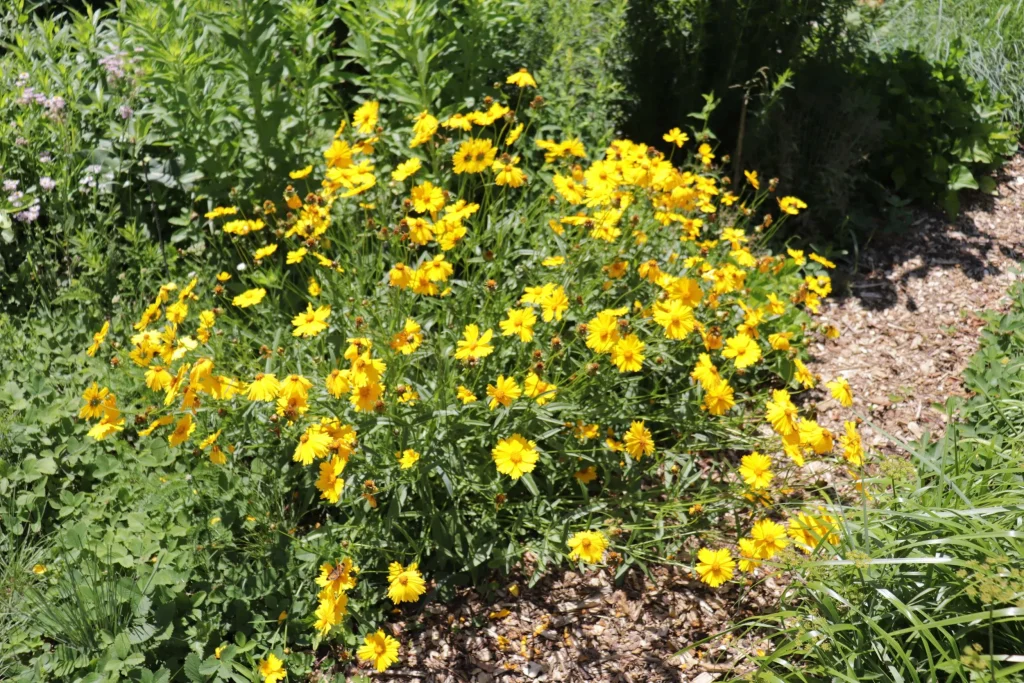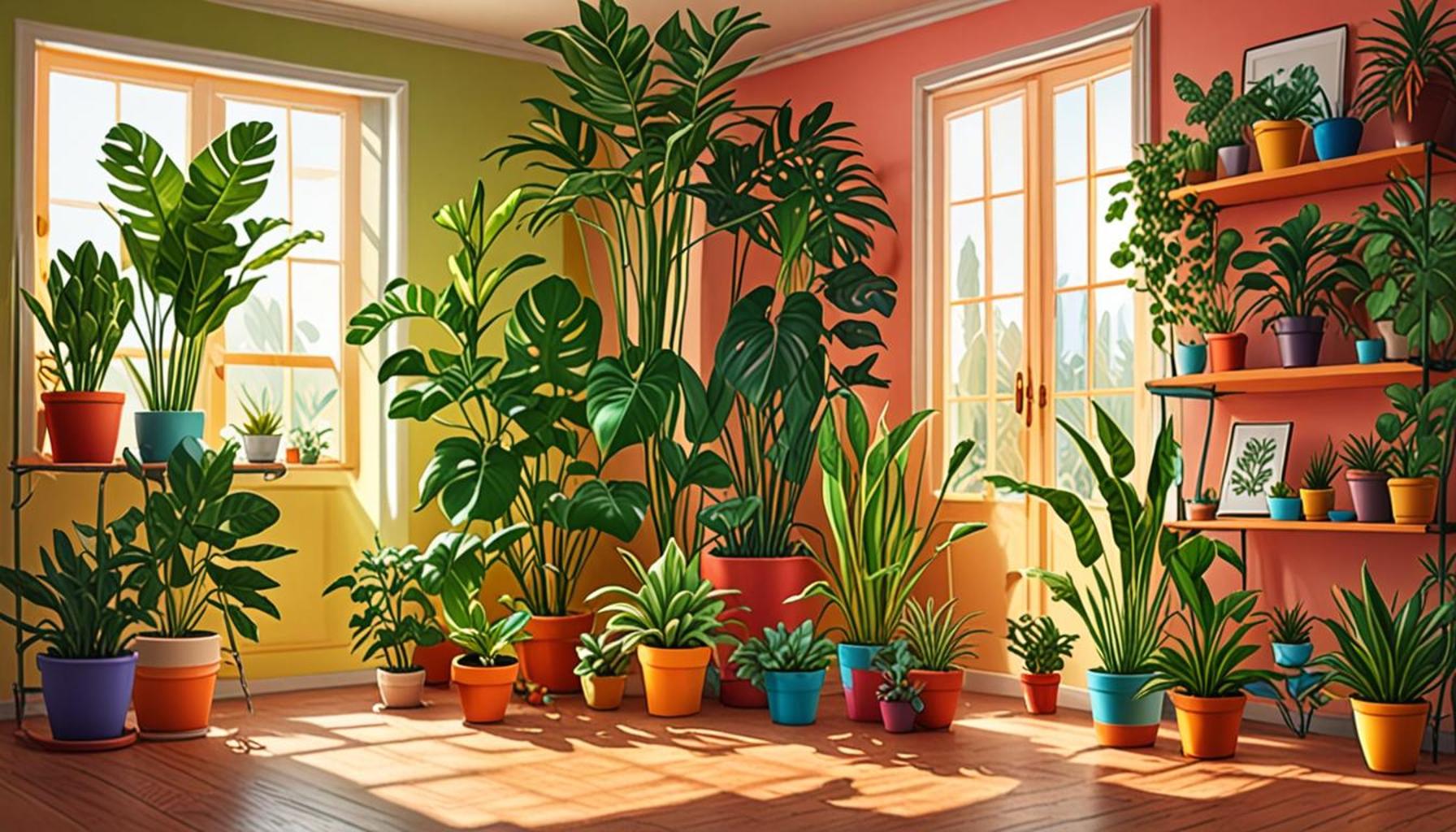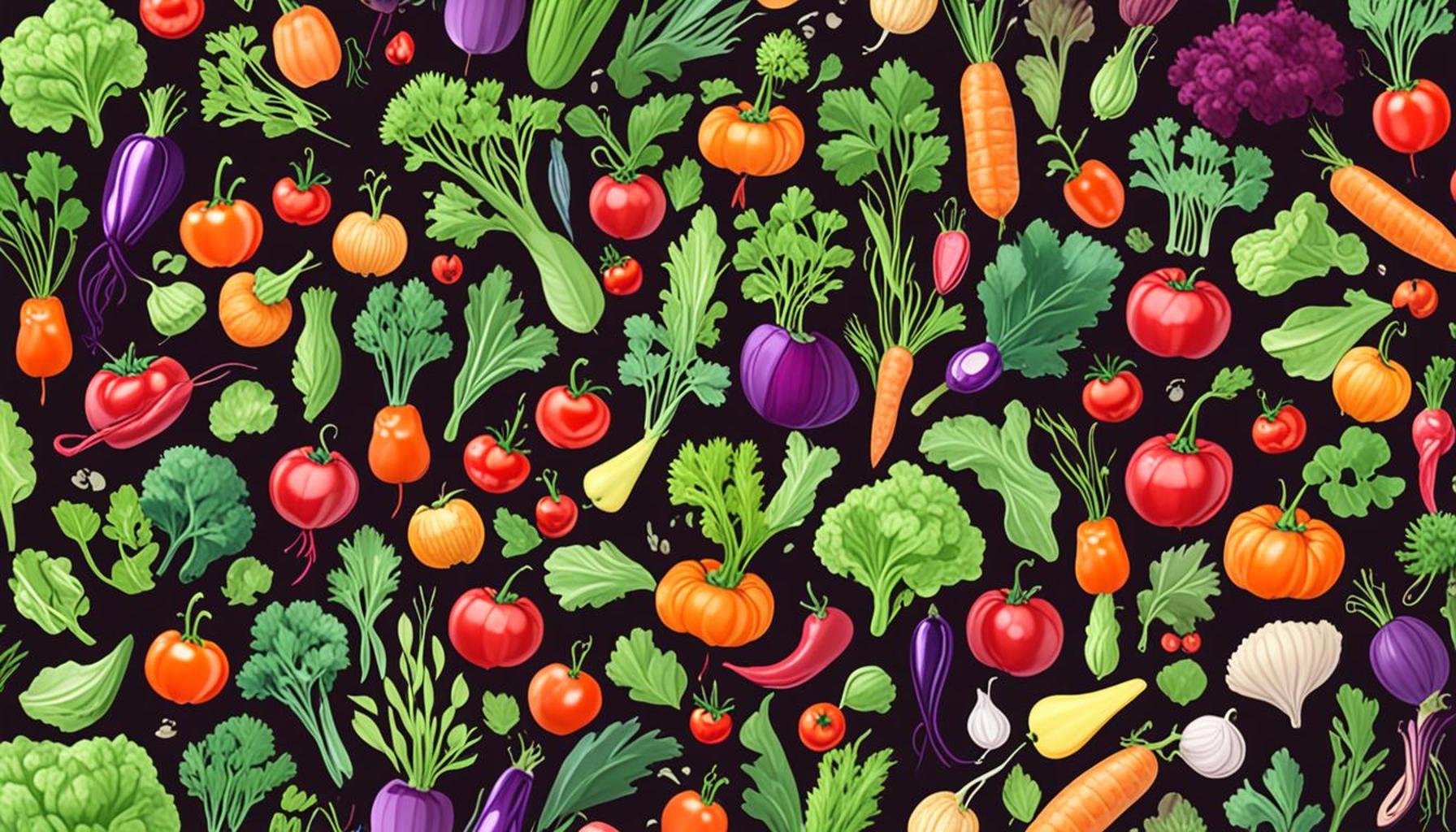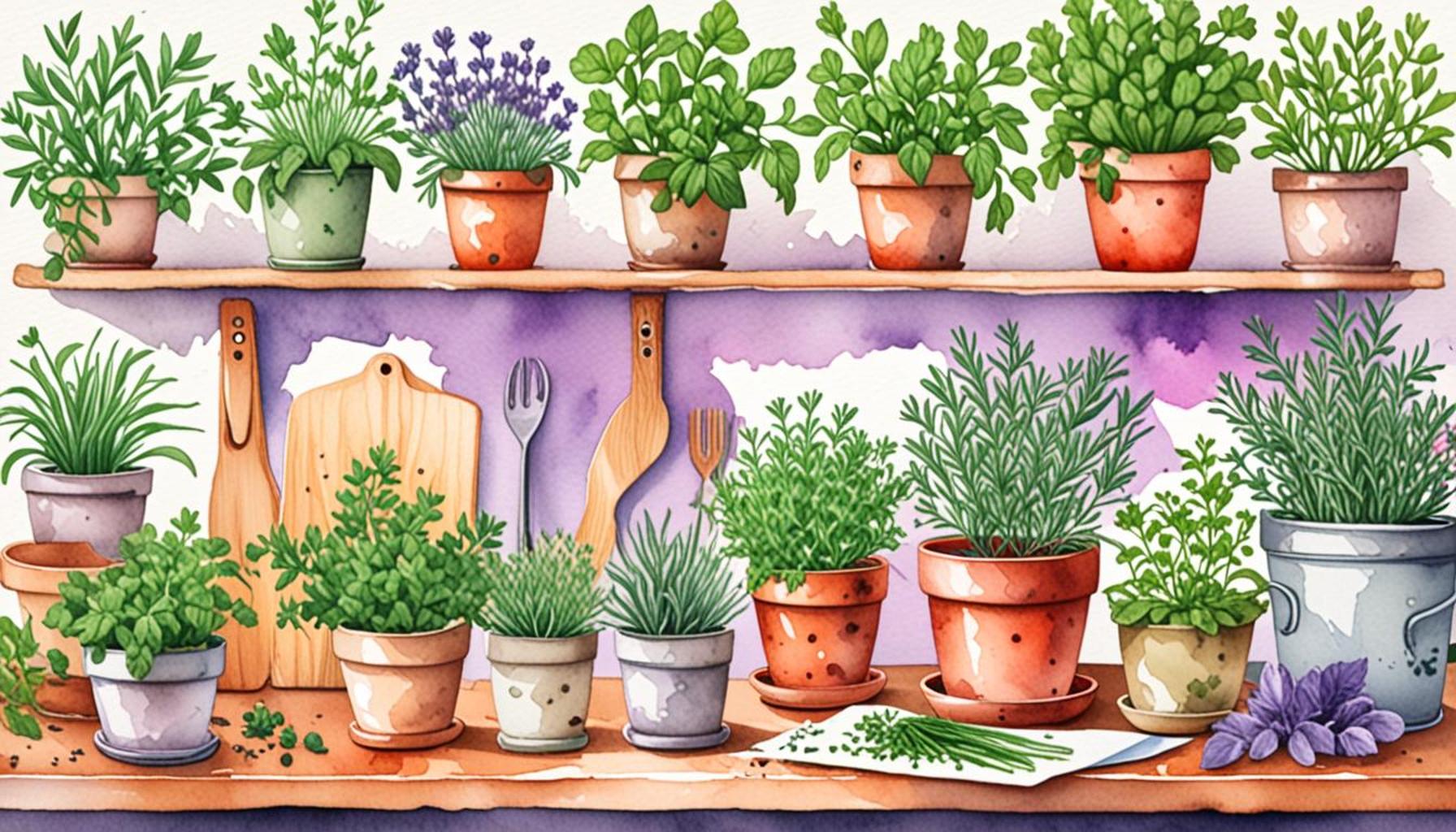Native Plants: Benefits and How to Select Them for Your Garden

The Beauty and Importance of Native Plants
Imagine walking into a vibrant garden that naturally flourishes without the need for excessive care or artificial inputs. This vision can come to life when you rely on native plants. Over generations, these plants have adapted to the specific climates and soil conditions of their regions, making them a sustainable, low-maintenance choice for both novice and experienced gardeners. By incorporating native species into your landscape, not only do you create an aesthetically pleasing environment, but you also foster ecological balance and health.
Enhancing Biodiversity
One of the most significant advantages of native plants is their ability to support local wildlife. Birds, butterflies, bees, and other pollinators rely on native flora for nectar and habitat. For example, the Eastern Bluebird is known to nest in open fields with native grasses and perennials, while the <strong Monarch butterfly depends on milkweed, a native plant, for laying its eggs and feeding its caterpillars. By planting these species in your garden, you create a haven for these creatures, which are vital for pollination and maintaining healthy ecosystems.
Water Conservation
Another appealing aspect of native plants is their ability to reduce water usage. Many native species are drought-resistant, thriving on the limited rainfall typical to their respective areas. This is particularly important in parts of the United States, such as the Southwest, where water scarcity is a growing concern. For instance, plants like California poppy and desert willow not only require minimal watering but also bring beautiful splashes of color to gardens during bloom seasons.
Preserving Ecosystems
Furthermore, incorporating native plants into your garden can preserve biodiversity. As non-native species often out-compete local plants, fostering a garden filled with indigenous varieties helps maintain the health of local ecosystems. Grasslands, wetlands, and forests all rely on the interactions between native plants and local wildlife for sustenance and survival. By choosing to plant species such as wild geraniums or purple cone flowers, you are not just gardening—you are contributing to the balance of your local environment.

Choosing the Right Native Plants
With the plethora of options available, selecting the right native plants may seem daunting. However, a few essential strategies can simplify the process:
- Research local flora: Connecting with local garden centers or state-based native plant societies can provide invaluable insights. Many organizations offer resources and plant sales, helping you choose the best varieties for your area.
- Know your zone: Understanding your USDA Plant Hardiness Zone is crucial for selecting plants that will thrive in your climate. This information allows gardeners to make informed decisions about which plants will survive and flourish through seasonal changes.
- Consider plant roles: Decide how you want your garden to function. Do you need ground cover to prevent soil erosion, or are you looking for vertical elements to draw the eye? Think about layering plants to create a diverse habitat that offers food and shelter for wildlife.
By carefully selecting native plants tailored to your environment, you not only enhance the beauty of your garden but also play a vital role in promoting ecological health and sustainability. Dive into the world of native gardening and discover the countless benefits that await you while nurturing the environment.
DIVE DEEPER: Click here to learn more
Understanding the Advantages of Native Plants
As urban landscapes evolve and the demand for sustainable practices grows, the significance of native plants in gardening has never been more pronounced. These indigenous species serve a vital role in helping to establish resilient ecosystems. When you choose to integrate native plants in your garden, you’re not only beautifying your surroundings but also playing a part in conserving invaluable resources and supporting local wildlife.
Building Resilient Landscapes
Native plants are inherently adapted to their local environment, meaning they are better equipped to withstand the specific challenges posed by climate, soil, and pests. This resilience allows them to thrive with far less intervention compared to non-native species. For instance, the Bluebell, widely found in the eastern United States, blooms every spring without the need for chemical fertilizers or pesticides. This characteristic not only saves you time but also reduces the environmental impact common in traditional gardening methods.
Lower Maintenance Requirements
Incorporating native plants can significantly diminish the need for added maintenance. Unlike exotic varieties that often demand more water and specialized care, many native species are drought-tolerant and adapted to local rainfall patterns. This means fewer resources are expended on irrigation and fertilization. The Prairie Dropseed is an excellent example; this native grass requires little additional water once established, while adding texture and movement to the garden.
Creating a Sustainable Habitat
By focusing on local species, gardeners contribute to the creation of a more sustainable habitat. Native plants provide food and shelter for various forms of wildlife. They can serve as a lifeline for struggling pollinator populations, including bees and butterflies. For example, the Butterfly Weed—a host plant for the monarch caterpillar—is critical for the survival of these important insects and can be a stunning addition to a garden. Moreover, establishing native plants fosters a sense of community; as they thrive, they help to enrich the local ecosystem.
Steps to Selecting Native Plants for Your Garden
Choosing the right native plants can be an enjoyable and rewarding experience. Here are several steps to guide your selection:
- Evaluate Your Garden Space: Consider the sunlight, water availability, and soil type of your garden. This knowledge will aid you in selecting plants that will thrive in your specific conditions.
- Identify Native Plant Communities: Research the native plant communities that grow in your region, such as prairies, wetlands, and forests. Understanding these ecosystems will help you to choose plants that harmonize within your garden’s design.
- Embrace Diversity: Opt for a mix of native plants that vary in height, texture, and bloom times. This diversity not only adds visual interest but also benefits various wildlife populations throughout the seasons.
By taking these steps, you can make educated choices that enhance the sustainability and beauty of your landscape while contributing to the preservation of local ecosystems. Embracing native plants is, without a doubt, an investment in both your garden and the environment.
Exploring the Benefits of Native Plants
Native plants are more than just beautiful additions to a garden; they offer a plethora of ecological benefits that make them a wise choice for both novice and experienced gardeners. Understanding these advantages can significantly impact the health of your garden and the surrounding environment.Sustainable Ecosystems One of the most compelling reasons to choose native plants is their ability to support local ecosystems. These plants have evolved to thrive in specific climates and soil conditions, which means they require fewer resources than non-native varieties. By integrating native species into your garden, you are fostering biodiversity and promoting a balanced ecosystem. This is especially important for attracting pollinators such as bees and butterflies, which are essential for the health of our food systems.Low Maintenance Another significant benefit of native plants is their low maintenance requirements. Once established, they typically require less watering, fertilization, and pest control than traditional garden varieties. This not only saves you time and money but also reduces your environmental footprint by minimizing chemical use and water consumption. For busy gardeners, the resilience and adaptability of native plants make them an incredibly appealing option.
How to Select Native Plants for Your Garden
When it comes to choosing the right native plants for your garden, it’s important to consider factors such as your region’s climate, soil type, and sun exposure. Understanding these elements will help you make informed decisions that lead to a thriving, sustainable garden.
Research Local Flora
Start by researching which native plants are indigenous to your area. Many local extension services offer resources and lists tailored to your specific regional conditions. Additionally, native plant societies and gardening clubs can provide insights and recommendations based on local expertise.
Consider Plant Groupings
Think about the various layers of a natural habitat when selecting your plants. Incorporating a mix of ground covers, shrubs, and trees will not only enhance the visual interest of your garden but also create a habitat for a variety of wildlife species. Consider how these plants can work together to create an aesthetically pleasing and functional environment.
| Benefits | Key Features |
|---|---|
| Ecological Support | Native plants are essential for maintaining local ecosystems and supporting wildlife. |
| Low Maintenance | These plants require less water and care, saving you time and resources. |
By understanding the benefits and carefully selecting the right native plants for your garden, you can create a sustainable and resilient landscape that is not only beautiful but also beneficial to the environment. As you delve into this journey, you’ll discover that your garden can be a true haven for nature.
LEARN MORE: Click here to discover essential tools
Enhancing Biodiversity and Cultural Value
In addition to their ecological benefits, native plants play a crucial role in enhancing biodiversity and preserving cultural heritage. When you cultivate native plants in your garden, you are creating a haven not just for local wildlife but also for the myriad of species that rely on these plants for food and habitat. Biodiversity is essential for the stability and resilience of ecosystems, and native plants act as the foundation upon which diverse animal and insect populations thrive.
The Role of Native Plants in Supporting Wildlife
One of the significant advantages of native plants is their ability to support and attract various forms of wildlife. Native plant species have evolved alongside local animals and insects, creating mutually beneficial relationships. For example, the Echinacea purpurea, or purple coneflower, is not only a stunning addition to any garden with its unique petals, but it also serves as a vital food source for many pollinators, such as butterflies and bees. By adding native species like this, gardeners increase the chances of attracting pollinators that are essential for the successful production of fruits, vegetables, and nuts.
Preserving Cultural Heritage
Native plants are an integral part of the cultural identity of many regions in the United States. For Indigenous peoples, plants such as the White Sage are not only used for ceremonial practices but also for traditional medicinal purposes. By incorporating these plants into gardens, cultivators can help preserve cultural knowledge and celebrate the traditions associated with them. Additionally, showcasing native plants provides opportunities for education regarding local ecology and the essential role these plants play in sustaining cultural heritage.
Combating Invasive Species
Choosing native plants is one of the most effective ways to combat the spread of invasive species. Invasive plants often outcompete native flora for resources, disrupt local ecosystems, and lead to declines in biodiversity. By planting native species, gardeners not only restore balance to their local environments but also help to suppress the growth of invasive plants. The Japanese Knotweed, for instance, is an aggressive invasive species that can devastate local ecosystems. By fostering the growth of native plants, homeowners can take a proactive stance against such invasives.
Planting Strategies for Your Native Plant Garden
Implementing effective planting strategies can lead to a flourishing native plant garden. Here are some strategies to consider:
- Use Natural Planting Patterns: Mimic natural plant communities by grouping similar species together. This method enhances aesthetic appeal while facilitating complex interactions among plants and wildlife.
- Layer Plants for Vertical Diversity: Incorporate a mix of herbaceous plants, shrubs, and trees to create a multi-layered landscape. This not only offers a variety of habitats for wildlife but also adds depth to your garden design.
- Seasonal Planting: Spread the blooming periods of your chosen native plants throughout the growing season. Doing so ensures a continuous food supply for pollinators and creates visual interest year-round.
By employing these planting strategies, gardeners can cultivate a landscape that is not only stunning but also ecologically beneficial. In recognizing the vast array of advantages that native plants offer, individuals have the power to transform their gardens into sustainable sanctuaries that promote biodiversity and preserve cultural ties.
LEARN MORE: Click here for detailed insights
Conclusion: Embracing the Power of Native Plants
As we have explored, native plants are a cornerstone of sustainable gardening practices, offering a multitude of ecological and cultural benefits. By incorporating these plants into your garden, you not only enhance biodiversity but also establish a supportive habitat for local wildlife, including crucial pollinators like bees and butterflies. The power of native plants lies in their adaptation to local conditions, making them low-maintenance and resilient options for gardeners seeking to create sustainable landscapes.
Moreover, by selecting native species, you can actively engage in preserving cultural heritage, connecting to the traditions and uses cherished by Indigenous communities. Whether it’s cultivating White Sage for its medicinal properties or planting the stunning Purple Coneflower for its beauty and ecological value, every native plant you choose tells a story of the land’s history and its future.
In addressing the pressing issue of invasive species, native plants also play a vital role in restoring balance to our ecosystems, allowing gardeners to take a stand against ecological degradation. Implementing thoughtful planting strategies, such as layering for diversity or maximizing blooming periods for pollinators, can further amplify the ecological impact of your garden.
Ultimately, embracing native plants is not just a gardening choice—it is a commitment to stewardship of our local environments. As you venture into the world of native planting, you not only create a visually appealing garden but also contribute to the broader ecological health of your region. So, take the plunge, enrich your garden with the beauty of native plants, and become part of a movement that prioritizes sustainability and biodiversity in an ever-changing world.


